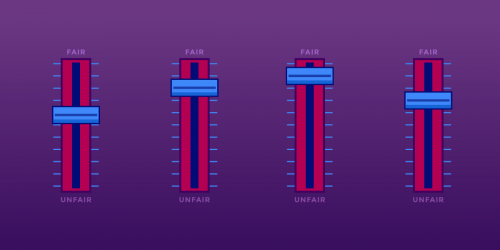Should a minor celebrity's right to wring every drop he can from his fame trump the right to create a realistic work? The Ninth Circuit Court of Appeals put its thumb on the scales today, issuing a terrible decision holding that a celebrity’s right of publicity is more important than any First Amendment right to depict real people in a video game. This ruling follows closely on the heels of a similar decision from the Third Circuit and threatens a wide range of speech—such as biographies and documentaries—which seeks to realistically depict famous people.
The plaintiff, Sam Keller, brought the case to challenge Electronic Art (EA)’s use of his likeness in its videogame NCAA Football. This game includes realistic digital avatars of thousands of college players. The game never used Keller’s name, but it included an avatar with his jersey number, basic biographical information, and statistics. Keller sued EA claiming that the game infringed his right of publicity—an offshoot of privacy law that gives a person the right to limit the public use of her name, likeness and/or identity for commercial purposes.
EA argued that it has a First Amendment right to use Keller’s likeness in an expressive work such as a video game. The Ninth Circuit recognized that EA had a First Amendment interest in the video game. But then the opinion goes sideways. In balancing Keller’s right to control the use of his identity against EA’s right to free speech, the Ninth Circuit applied the deeply flawed ‘transformative use’ test. This test (which has been borrowed from copyright law without, unfortunately, borrowing the fair use doctrine's crucial role of ensuring that copyright law promotes and does not impede new creativity) asks whether the use of someone’s identity is transformative, i.e., creates something new with a different purpose or character. Two judges on the panel found that EA’s depiction of Keller was not transformative. They reasoned that the “use does not qualify for First Amendment protection as a matter of law because it literally recreates Keller in the very setting in which he has achieved renown.”
Taken literally, this reasoning could impact an extraordinary range of protected speech. As Judge Sidney Thomas explained in dissent:
The logical consequence of the majority view is that all realistic depictions of actual persons, no matter how incidental, are protected by a state law right of publicity regardless of the creative context. This logic jeopardizes the creative use of historic figures in motion pictures, books, and sound recordings.
Indeed, we can see the danger of the majority’s decision by applying its reasoning to both EA’s game and the recent biopic The Social Network.


The majority tried to distinguish other forms of speech—such as books and movies—by pointing to “EA’s primary emphasis on reproducing reality.” This is a terrible argument. Many books and movies strive for realism. Does that make them less worthy of First Amendment protection? Ultimately, the transformative use test makes no sense as a First Amendment standard. There is no reason to disfavor "realistic" speech.
Adding to the strangeness of today’s ruling, the same three-judge panel simultaneously issued an excellent free speech decision in Brown v. Electronic Arts. That case involved nearly identical facts—footballer Jim Brown challenged EA’s use of his likeness in the game Madden NFL—but the claim was brought under the Lanham Act (the federal statute relating to trademarks). In Lanham Act cases, the Ninth Circuit applies the Rogers test, which asks whether the use of a trademark (or likeness) in an expressive work has any artistic relevance. Since EA’s use of Brown’s likeness was relevant to its football game, it was protected by the First Amendment. Unlike the vague transformation test, the Rogers test is highly protective of free expression. It merely requires that the artistic relevance be above zero and thus limits the need for the court to engage in artistic weighing. It should also be applied in right of publicity cases.
Today’s twin rulings create a bizarro world where the First Amendment (properly) provides robust protection for the use of trademarks in expressive works but offers almost no protection in the face of the amorphous state-law right of publicity—a right that is rooted in privacy protections but, in its current incarnation, only makes sense as a method of, like trademark, reducing consumer confusion. What is worse, in recent years, the right of publicity has expanded to apply to just about anything that “evokes” a person’s identity, such as a phrase associated with a celebrity (like “Here’s Johnny,”) or even a robot dressed like a celebrity. Left unchecked, publicity rights would give celebrities the right to censor a staggering range of expression. We hope that the Ninth Circuit (sitting en banc) or the Supreme Court steps in to restore robust protection for free speech.









